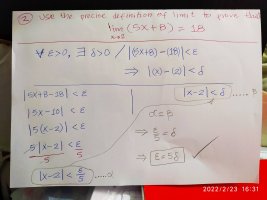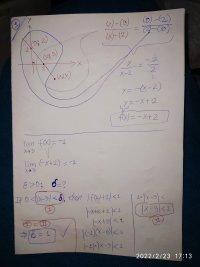bartmathhpro
New member
- Joined
- Feb 21, 2022
- Messages
- 1
1. The following graph of the function f satisfies x→3limf(x)=−1.
Determine a value of epsilon>0
that satisfies the following: If 0<|x−3|<epsilon, then |f(x)+1|<1.

2. Use the precise definition of limit to prove that
x→2lim(5x+8)=18
Determine a value of epsilon>0
that satisfies the following: If 0<|x−3|<epsilon, then |f(x)+1|<1.
2. Use the precise definition of limit to prove that
x→2lim(5x+8)=18



